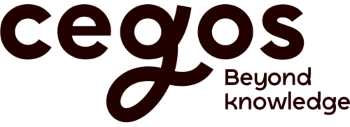A high staff turnover rate is one of the factors that most negatively affects business development. For this reason, it is necessary to implement actions to reduce it.
For adequate management in this aspect, it is essential that the company has specialized personnel who have received specific training in this regard.
What is staff turnover?

When we talk about personnel rotation or turnover , we refer to the entry and exit of employees within the same company. That is, the personnel turnover rate is the percentage of workers who leave the company and are replaced by others .
Leaving the company can be voluntary or involuntary . In the first case, the employee himself decides to leave his position for various reasons that we will delve into later. In the second case, it is the company that decides to terminate the worker for reasons such as staff cuts, changes in the internal structure or problems in the performance of the assigned work, for example.
Whatever the type, the employee turnover rate is a key indicator of the health of the company and, if it is too high, it can have a significant impact on both productivity and profitability. In fact, a high staff turnover rate is a clear indication that there are problems in human resources management, talent retention, job satisfaction or company culture, for example.
There are 2 causes of business turnover
As we mentioned in the previous point, below, we are going to delve into the main causes of a high voluntary staff turnover rate:
- Lack of opportunities for professional growth and development: If employees do not find the opportunity to have professional growth and develop their career in a company, they may look for another job in which it is offered.
- Insufficient wages and benefits: Employees expect to be adequately compensated for their work. If they are not satisfied with their salary and benefits, they can look for other companies that offer better compensation.
- Work-life balance issues: Work-life balance is essential. If there is no balance between the two, employees may decide to leave their position in search of another company where they can find that flexibility.
- Lack of recognition and appreciation: It is important to feel valued in a job. Otherwise, the employee will lose motivation to continue with the company.
- Leadership and management problems: Effective leadership and fair and transparent management are two of the pillars that support employee satisfaction.
How business rotation affects your company and employees
A high staff turnover rate can affect both the company itself and its employees, in several aspects.
Impact on the company:
- Costs: A high employee turnover rate will mean an extra investment of time and money for the selection of new workers and their training.
- Productivity: Each employee who leaves the company takes with them certain skills and knowledge that will take time for their replacement to reach the same productive level, which can delay important projects.
- Company culture: Of course, the company’s work culture will be affected and the values on which it is built will no longer be important from the perspective of employees.
Impact on employees:
- Demotivation: The constant departure and entry of colleagues can generate a feeling of instability within the company in the rest of the workers, which will negatively affect their motivation.
- Increased workload: When an employee leaves the company, his or her work must be covered by another employee or distributed among several. This will increase the workload of the remaining employees, resulting in increased stress and job dissatisfaction.
- Negative work environment: When business turnover is high, a negative work environment will be created, as employees will feel that their job is unstable and that they have no job security. This will reduce the commitment of workers to the company.
How is the staff turnover rate calculated?
There is a formula to calculate the annual staff turnover rate of a company that takes into account both voluntary and involuntary departures:
Employee turnover rate: (Number of employees leaving the company / Total number of employees in the company) x 100.
That is, if a company has 400 employees at the beginning of the year and during the year 60 leave the company, the business turnover rate applying this formula would be: (60/400) x100: 15%
Strategies to reduce staff turnover rate
To maintain a low staff turnover rate and, therefore, employee satisfaction and performance, it is necessary to implement certain strategies internally that will prevent increased turnover.
- Improve communication: Lack of two-way communication is one of the main reasons why employees leave a company. It is important that they feel that their voice is heard and that they are informed about the company’s objectives and plans, which will lead to an increase in productivity .
- Offer competitive benefits and compensation: This way, workers will feel valued and, therefore, their commitment to the company will increase.
- Provide opportunities for growth and development: It is important that training and development opportunities are offered to help employees acquire new skills and advance their careers.
- Foster a positive work environment: A positive work environment will improve employee morale and reduce the turnover rate. For this reason, work must be done to achieve a collaborative and friendly work environment.
- Improve work-life balance: Companies should offer conciliatory work options, such as work from home, flexible hours, days off or flexible pay , among other options, that allow employees to balance their work and personal life.
- Encourage teamwork: Teamwork is an effective way to improve productivity and employee satisfaction. To achieve this, it is essential to make team activities, collaborative projects and other activities that encourage collaboration and communication between employees available to workers.
Internal organization and human resource management are essential to avoid having an employee turnover rate. And within both areas there are many areas to delve into. At Cegos, you can find several related training options:

